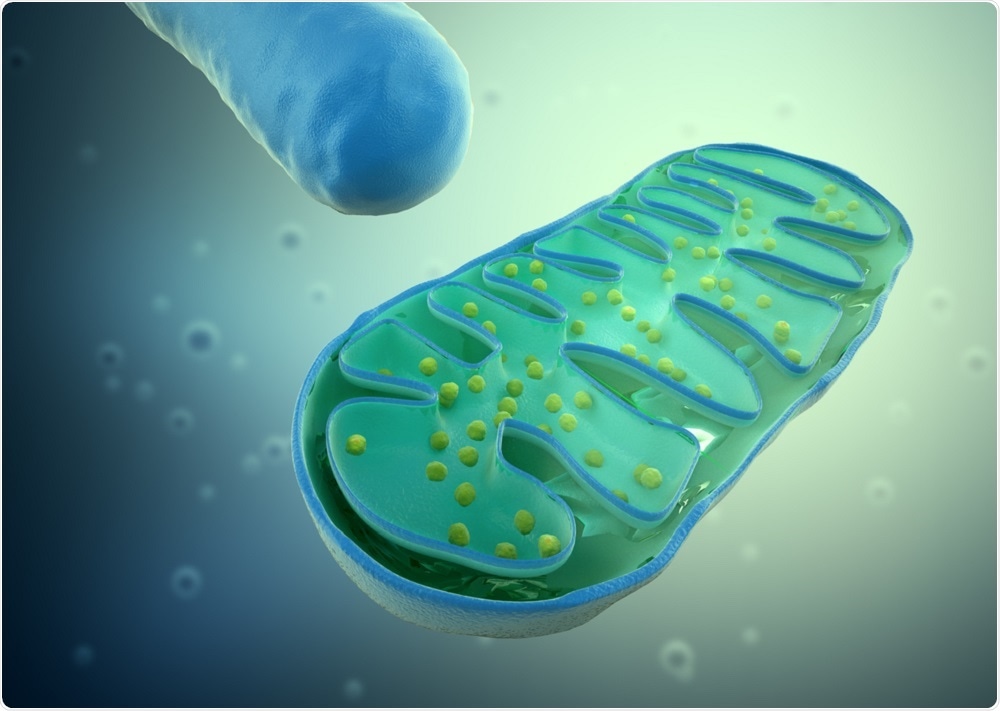Scientists have shown that a protein which is abundant in the blood of young mice can delay the aging process and improve the activity levels of older mice. The study was carried out by researchers at the Washington University School of Medicine in St. Louis and the results were published in the journal Cell Metabolism on June 13, 2019.
 Mopic | Shutterstock
Mopic | Shutterstock
The protein in question is an enzyme called extracellular nicotinamide phosphoribosyltransferase (eNAMPT), which catalyzes the production of nicotinamide adenine dinucleotide (NAD), a molecule found in every cell in the body. NAD is an essential part of the electron transfer chain in the mitochondria, the organelle responsible for producing energy in cells.
NAD declines dramatically as we age, and as such, scientists believe that increasing the amount of NAD may increase life expectancy and overall health.
Dr. Shin-ichiro Imai, MD, PhD, senior author of the study and a professor of developmental biology at the Washington University School of Medicine in St. Louis, explained further.
“We think the body has so many redundant systems to maintain proper NAD levels because it is so important.
“Our work and others’ suggest it governs how long we live and how healthy we remain as we age. Since we know that NAD inevitably declines with age, whether in worms, fruit flies, mice, or people, many researchers are interested in finding anti-aging interventions that might maintain NAD levels as we get older.”
Imai’s new study took eNAMPT from the blood of young mice and transferred it to older mice, finding that NAD levels improved and aging signs of aging such as decreased activity levels and poor fur quality.
We were surprised by the dramatic differences between the old mice that received the eNAMPT of young mice and old mice that received saline as a control.
These are old mice with no special genetic modifications, and when supplemented with eNAMPT, their wheel-running behavior, sleep patterns and physical appearance – thicker, shinier fur, for example – resemble that of young mice.”
The study showed that the lifespans of older mice increased by approximately 16 percent. As well as transferring blood between mice, Imai and colleagues also increased NAD levels in the mice by administering oral doses of a chemical called nicotinamide mononucleotide (NMN) that eNAMPT produces.
From these experiments, the research team found that the levels of eNAMPT in the blood displayed strong correlations with the number of days the mice lived.
Mice that were given eNAMPT lived substantially longer than control mice who received saline solution alone. One mouse eNAMPT surpassed 1,029 days old, or 2.8 years.
The research team was able to “predict, with surprising accuracy, how long mice would live based on their levels of circulating eNAMPT," according to Dr. Imai.
Generally, rats, mice, and hamsters have lifespans of around 2 to 3 years in protected environments, but mice usually live for less than one year in the wild.
We have found a totally new pathway toward healthy aging... That we can take eNAMPT from the blood of young mice and give it to older mice and see that the older mice show marked improvements in health – including increased physical activity and better sleep – is remarkable.”
Dr. Imai, Senior Author
The hypothalamus is the portion of the brain that is critical in the aging process, and researchers found that the hypothalamus creates NAD with the eNAMPT enzyme.
Carriers called extracellular vesicles carry eNAMPT through the bloodstream to the brain in both mice and humans after it has been released from fat tissue. As blood levels of eNAMPT decrease, the hypothalamus is less able to function properly, thus decreasing lifespan.
Further studies are necessary to ascertain whether the results found in mouse studies will be replicable in humans.
“We don’t know yet if this association is present in people, but it does suggest that eNAMPT levels should be studied further to see if it could be used as a potential biomarker of aging.”
Source:
Washington University School of Medicine Press Release. June 13, 2019. https://medicine.wustl.edu/
Journal reference:
Yoshida, M., et al. (2019). Extracellular Vesicle-Contained eNAMPT Delays Aging and Extends Lifespan in Mice. Cell Metabolism. https://doi.org/10.1016/j.cmet.2019.05.015.